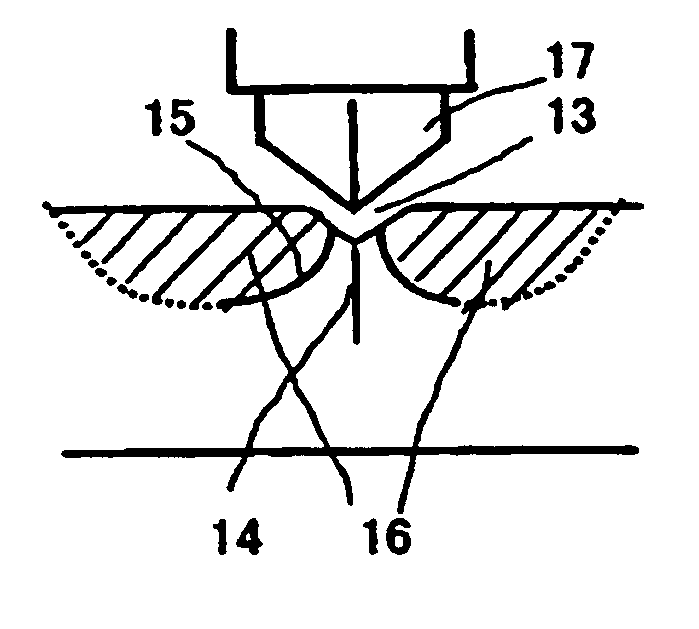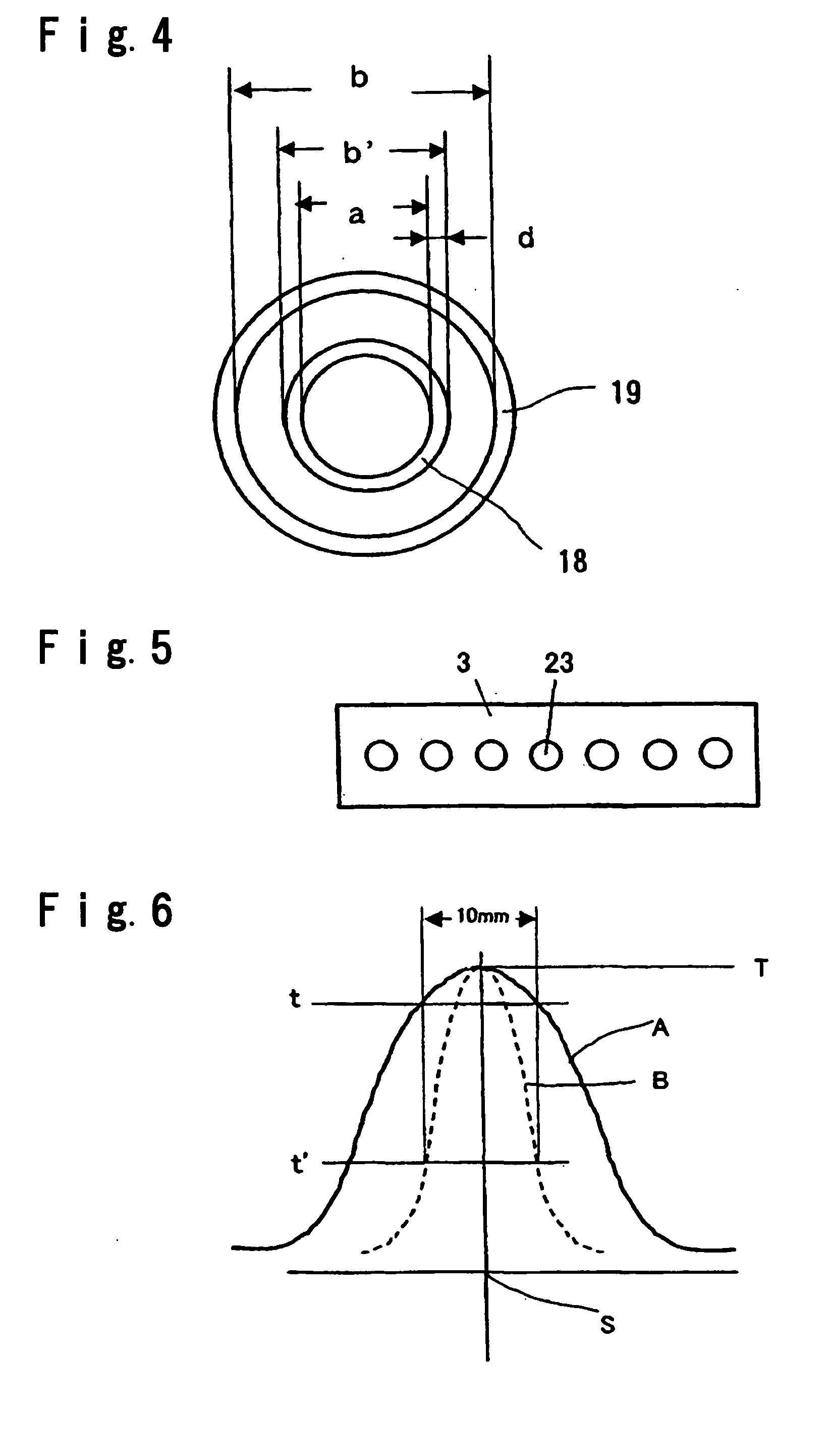Method and apparatus for separating sheet glass
a technology of sheet glass and separation method, applied in the field of sheet glass separation, can solve the problems of fine glass chips, flaws on the glass surface, and difficulty in peeling glass chips in the production line of sheet glass, and achieve the effects of improving edge strength, excellent linearity or directivity, and high quality
- Summary
- Abstract
- Description
- Claims
- Application Information
AI Technical Summary
Benefits of technology
Problems solved by technology
Method used
Image
Examples
example
Example 1
[0083] In the separating apparatus shown in FIG. 1, a diamond wheel was employed to engrave a score having a depth of 100 μm and a length of 7 mm at the separation initiation point of each of glass sheets having thicknesses of 1.8 mm, 3.5 mm, 6 mm, 12 mm and 19 mm under the same score forming conditions as one another. After each of the glass sheets was heated at a portion with the imaginary line of separation set therein by the burner, the heated portion was locally cooled along the imaginary line of separation by the cooling nozzle to form a crack. After each of the glass sheets was bent and separated along the crack, it was visually checked out how the crack was formed and whether glass chips has been produced after the bending and separating operation or not. According to the principle of leverage, each of the glass sheets was bent and separated into smaller sheets by pressing both sides of the crack from upward in such a state that each of the glass sheet was supporte...
example 2
[0088] In the separating apparatus shown in FIG. 1, a diamond wheel is employed to engrave a score having a depth of 100 μm and a length of 7 mm at the separation initiation point of each of glass sheets having thicknesses of 3.5 mm and 5 mm under the same score forming conditions. After each of the glass sheets was heated at a portion with the imaginary line of separation set therein by the burner, the heated portion was locally cooled along the imaginary line of separation by the cooling nozzle to propagate a crack (having the same cooling conditions as Example 1). In such operations, the distance L between the burner and the cooling nozzle was modified in a range of from 180 to 380 mm for the glass sheet having a thickness of 3.5 mm and in a range of from 180 to 460 mm for the glass sheet having a thickness of 5 mm in order to investigate the relationship between L and the depth of a formed crack. The results of the investigation are shown in Table 3. The heating conditions of th...
example 3
[0091] In the separating apparatus shown in FIG. 1 a crack required for separation was formed in a longitudinal direction in each of glass sheets (100 cm in length×100 cm in width×3.5 mm in thickness) with the score forming conditions for the cutter and the heating conditions for the heating burner (gas / O2: 300 / 280 (Nl / h)) being fixed, with the locally cooling conditions for the cooling nozzles modified with respect to only the projection amount of the liquid-ejecting port to modify the cooling width, and with the other conditions being the same as one another. After that, a bending moment was applied to the cracked portion of each of the glass sheets to bend and separate each of the glass sheets into separate sheets, and the linearity of the separated portion of each of the glass sheets was checked out. The conveying speed for the glass sheets was set at 900 m / h.
[0092] In the case stated above, the diamond wheel is used to engrave each of the scores in a depth of 100 μm and at a l...
PUM
 Login to View More
Login to View More Abstract
Description
Claims
Application Information
 Login to View More
Login to View More - R&D
- Intellectual Property
- Life Sciences
- Materials
- Tech Scout
- Unparalleled Data Quality
- Higher Quality Content
- 60% Fewer Hallucinations
Browse by: Latest US Patents, China's latest patents, Technical Efficacy Thesaurus, Application Domain, Technology Topic, Popular Technical Reports.
© 2025 PatSnap. All rights reserved.Legal|Privacy policy|Modern Slavery Act Transparency Statement|Sitemap|About US| Contact US: help@patsnap.com



